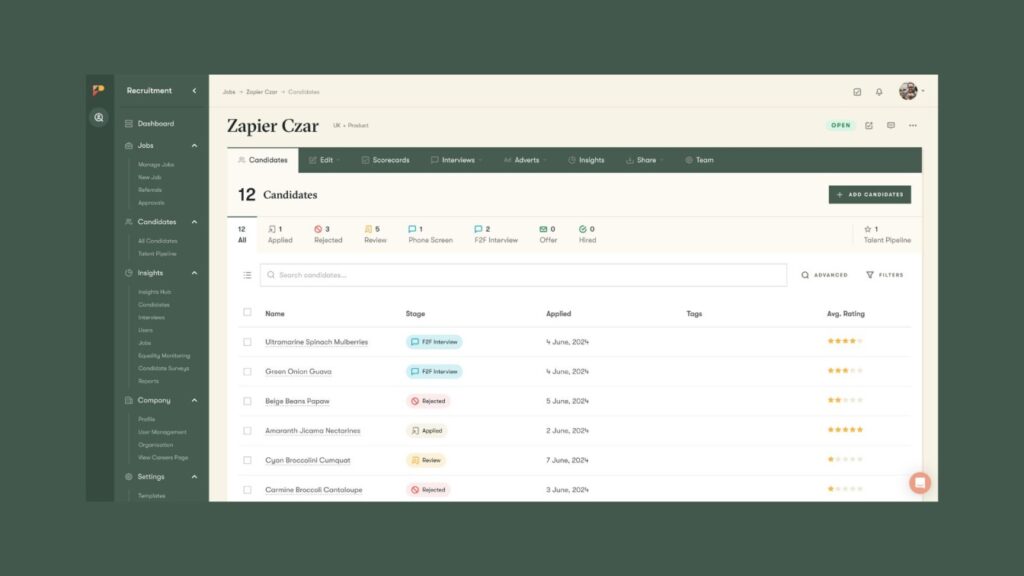In 2024 alone, over 1 billion job applications were submitted across LinkedIn, Indeed, and other global platforms. But here’s what most job seekers don’t realize: up to 75% of those applications are filtered out by AI tools before a human recruiter even glances at them.
For employers, that’s a feature. For job seekers, especially those in emerging markets like Africa, it’s a bug. A very costly one.
AI was supposed to make hiring smarter. But it’s becoming a problem. Many companies now use Applicant Tracking Systems (ATS), which are software tools that scan CVs for specific keywords and rank candidates accordingly.
The issue?
These tools were built for speed.
According to Havard Business School, 88% of employers using ATS acknowledge that qualified candidates are often filtered out by mistake.
Also, very few people optimize their CV for ATS. A lot of job seekers especially in Africa don’t even know what it is and how it works.
And because these tools often rely on narrow filters like specific keywords, job titles, or work tools mentions, they unintentionally screen out:
-
People with unconventional career paths
-
Candidates from underrepresented regions
-
Talents who may not use “global-standard” CV formats.
So it’s no longer about who is the best fit. It’s now who fits the algorithm.
In a famous case reported by Reuters, Amazon had to scrap its internal AI recruiting tool. The system had taught itself that male candidates were preferable, penalizing CVs that included the word “women” (as in “women’s coding club”).
The Rise of Skills-Based Hiring
Now here’s what is happening. Many employers are moving away from résumés and toward proof-of-skill. Why? Because résumés tell stories. Portfolios show results.
Platforms like GitHub, Behance, Dribbble, and even TikTok are being used to evaluate creativity, technical ability, and communication.
A survey by CareerBuilder found that 70% of employers use social networking sites to research job candidates.
What does this mean for African talents?
If your background doesn’t match the “expected” data the system was trained on, you’re more likely to be invisible even if you’re more than qualified. And with over 40% of African tech workers now applying to remote roles globally, this becomes a real threat.
What’s Replacing the Résumé?
For decades, résumés have been the standard way to tell employers who you are and what you’ve done. But today, that one-page summary is slowly losing its power. In a world where job seekers are mass-applying with AI and recruiters are drowning in generic CVs, employers are looking for better signals of who can actually do the work.
So, what’s coming next?
Here are four major shifts happening right now:
Project-Based Hiring
Instead of relying solely on job titles and work history, many companies now ask candidates to complete a small task before an interview.
It could be something like:
-
“Fix this broken UI in under 24 hours.”
-
“Draft a 3-post Instagram strategy for a fashion brand.”
-
“Write a blog intro targeting B2B SaaS founders.”
These tasks aren’t just tests. They are previews of how you think, communicate, and solve problems in real time. For employers, it’s a much clearer way to assess skills than reading bullet points on a résumé. For candidates especially those seeking tech jobs and opportunities, it’s a chance to stand out based on ability.
In some industries, especially tech, design, content, and marketing, this is quickly becoming the default way to screen talent. Résumé or not, if you can deliver, you move forward.
Reputation-Based Hiring
Another shift is happening in plain sight: recruiters are increasingly looking at your online reputation instead of your résumé.
Here’s what that looks like:
-
A strong trail of endorsements and recommendations on LinkedIn
-
A well-maintained GitHub profile showing real code contributions
-
Consistent Upwork reviews from past clients
-
Twitter/X threads showing your thinking, writing, or past projects
In this model, your digital footprint becomes your résumé. Recruiters can see how others value your work, what you’ve shipped, how you engage with your field, and whether your voice stands out.
Reputation signals are especially powerful for freelancers, creatives, developers, and marketers.
Microcredentials & Skill Badges
Big companies like Google, IBM, Meta, and Microsoft now offer short, affordable courses with industry-recognized certificates, also known as micro-credentials or digital badges.
These programs focus on specific, job-ready skills like UX design, Cloud computing, Data Analysis, and Cybersecurity.
They take weeks (not years) to complete, cost a fraction of a university degree, and are increasingly respected by hiring managers.
In fact, according to the Coursera Industry Skills Report (2023), 87% of employers now say they value microcredentials just as much or even more than traditional degrees when hiring.
This trend reflects a bigger shift: companies care more about what you can do today than what you studied years ago. And micro-credentials offer a faster, cheaper way to prove that.
Conclusion
Résumés aren’t disappearing overnight. But they’re no longer enough on their own. In today’s job market, proof of skill, real-world projects, and reputation are starting to matter more than polished summaries and job titles. If you’re job hunting, it might be time to focus less on perfecting your résumé and more on showing what you can actually do.
